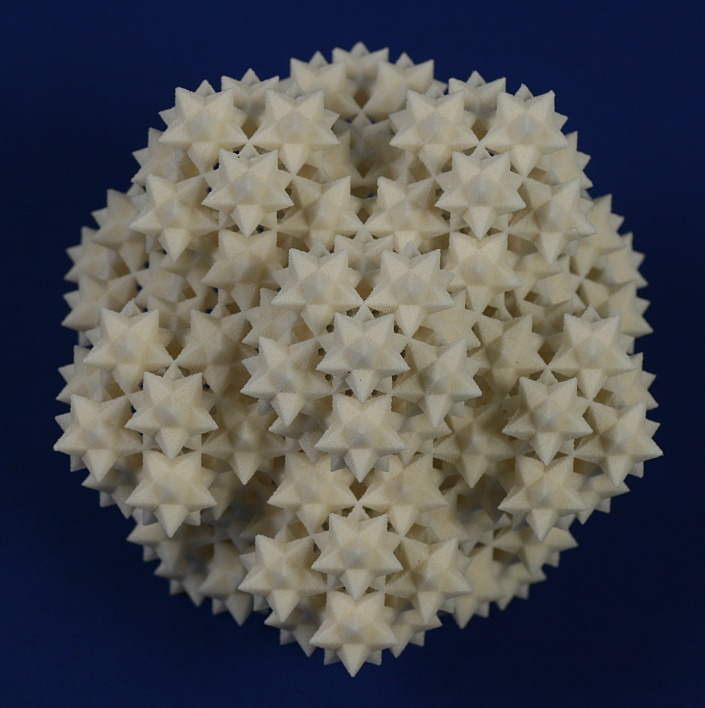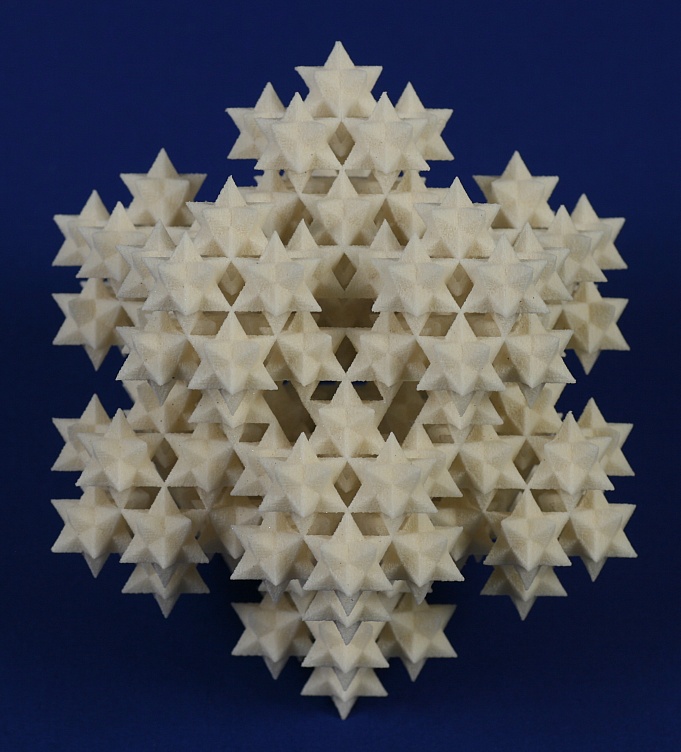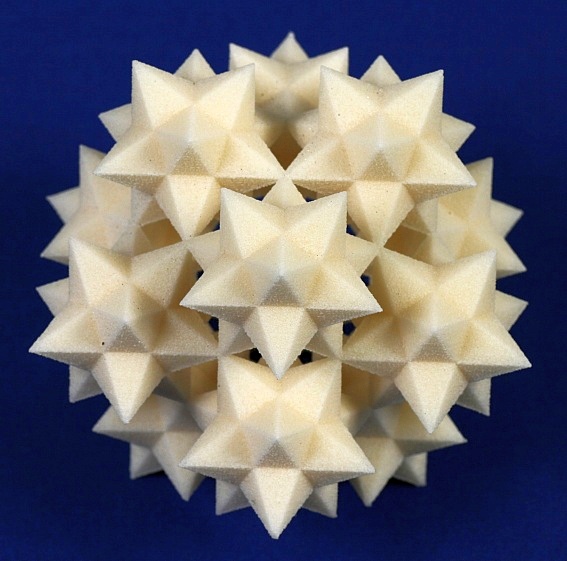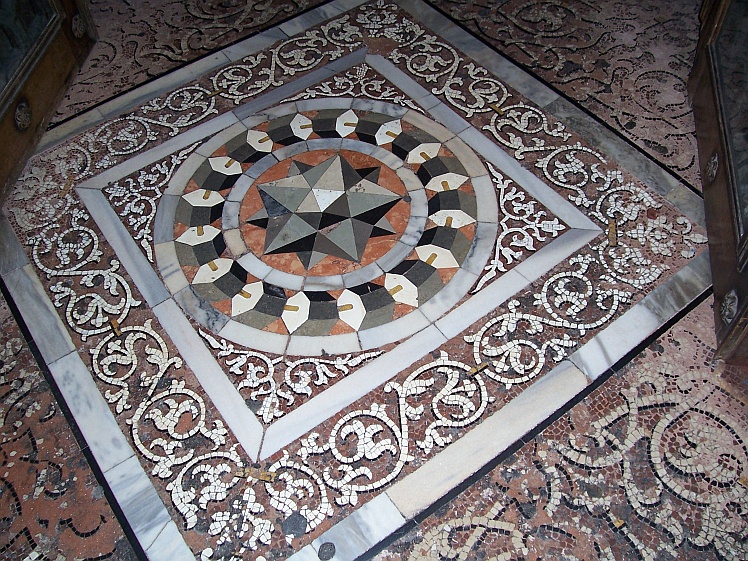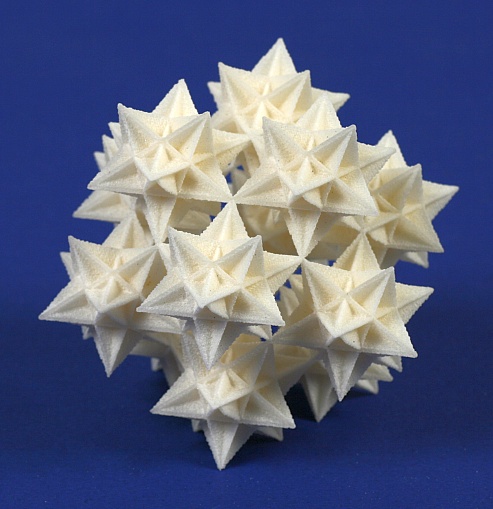
Twenty great icosahedra arranged as the vertices of an icosahedron.
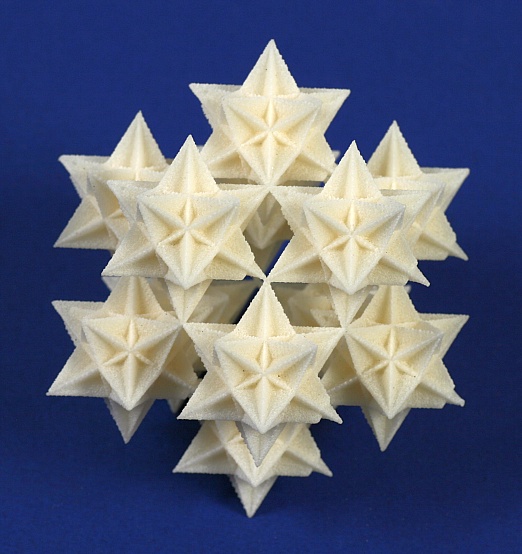
Same as above, looking down a 3-fold axis.
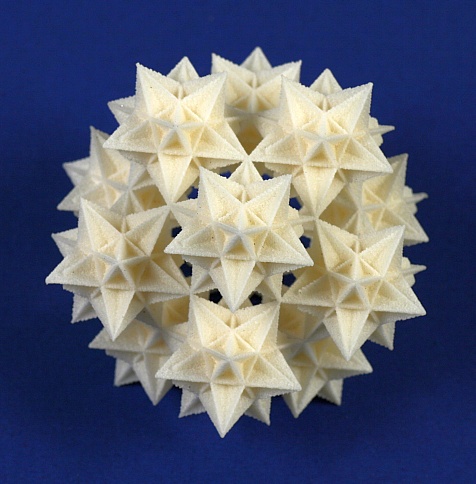
The same again, looking down a 5-fold axis, to emphasize it's floral
feeling.
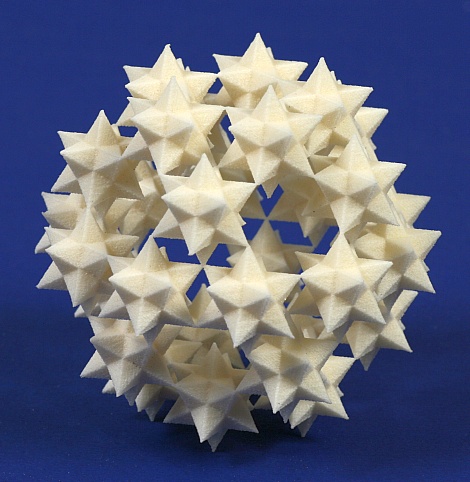
Thirty small stellated dodecahedra, at the vertices of an
icosidodecahedron.
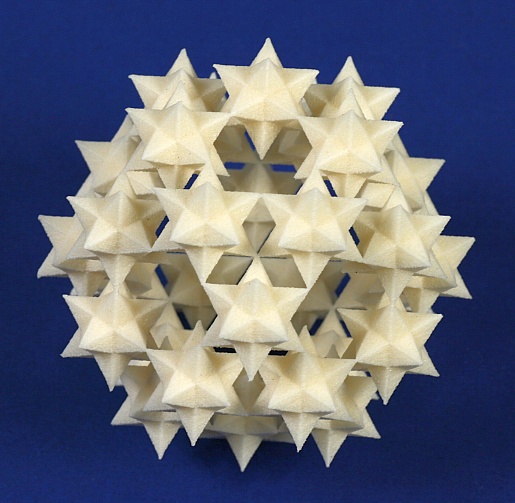
Same as above, looking down a 3-fold axis.

Here is a 3-fold view of a different cluster of 30 small stellated
dodecahedra at the vertices
of an icosidodecahedron. Here, each has been rotated 90 degrees
compared to the above.
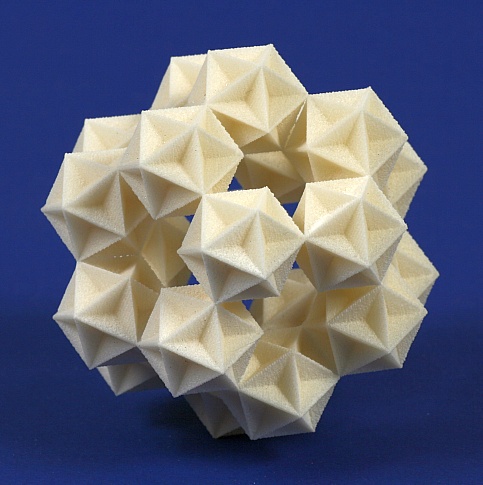
Twenty great dodecahedra, looking along a 3-fold axis.
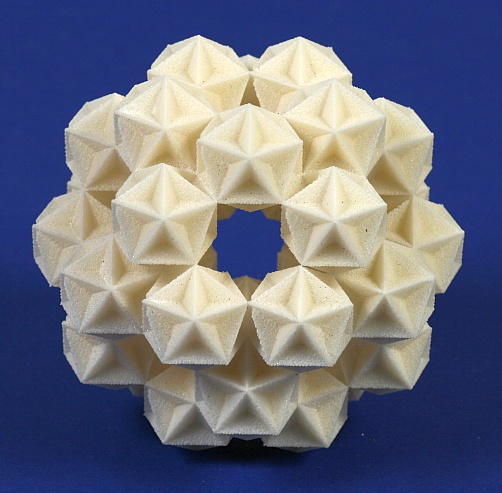
Thirty great dodecahedra, arranged as the vertices of an
icosidodecahedron.
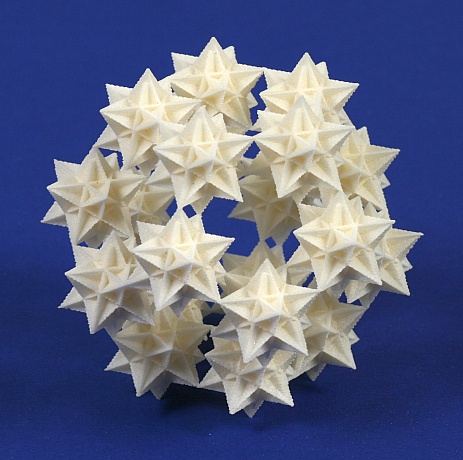
Twenty great icosahedra, arranged as the vertices of a dodecahedron.
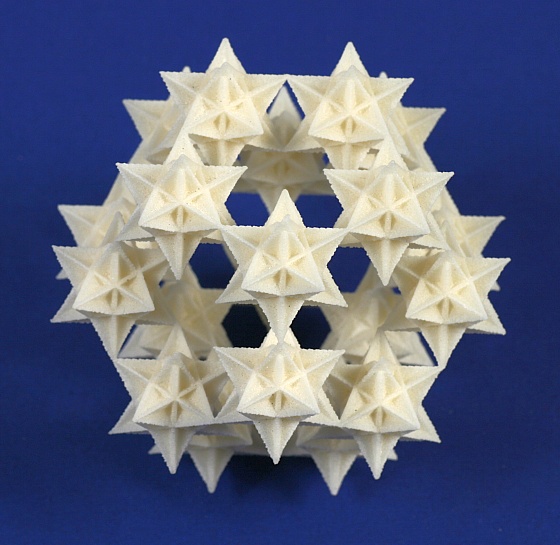
Same as above, looking at a 3-fold axis.


